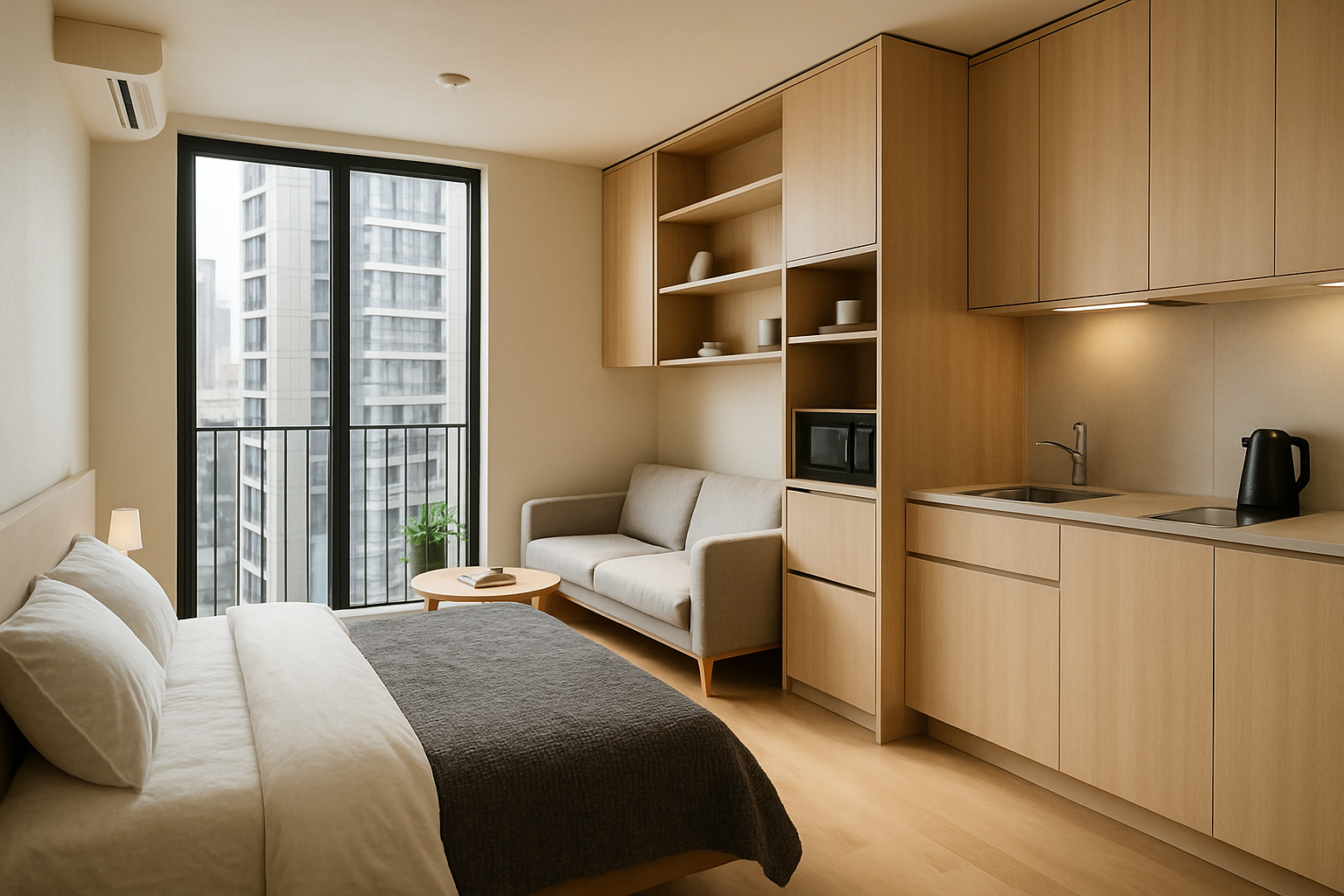Micro-Apartment Revolution: Redefining Urban Living Spaces
The real estate landscape is witnessing a fascinating shift as micro-apartments gain traction in major urban centers. These compact living spaces, typically ranging from 200 to 400 square feet, are reshaping how city dwellers perceive and utilize residential spaces. With 54% of the world's population now residing in urban areas, the demand for affordable, centrally-located housing has skyrocketed, paving the way for this innovative housing solution.

Historical Context and Evolution
Micro-apartments trace their origins to the dense urban landscapes of Asian megacities like Tokyo and Hong Kong. In these space-constrained environments, architects and developers have long grappled with the challenge of maximizing livability in minimal square footage. The concept gradually spread to Western cities, adapting to local regulations and lifestyle preferences along the way.
In the United States, the micro-apartment movement gained significant traction around 2012 when New York City launched a pilot program to develop “micro-units” smaller than the city’s minimum 400-square-foot requirement. This initiative sparked a nationwide conversation about housing density, affordability, and the changing needs of urban residents.
Current Market Trends and Financial Insights
The micro-apartment market has experienced remarkable growth in recent years. According to a report by Grand View Research, the global micro-apartment market size was valued at $426.3 billion in 2021 and is expected to expand at a compound annual growth rate (CAGR) of 10.3% from 2022 to 2030.
Several factors are driving this growth:
-
Urbanization: The ongoing migration to cities has created a shortage of affordable housing options in prime locations.
-
Changing demographics: Millennials and Gen Z, who often prioritize experiences over possessions, are more willing to trade space for location and amenities.
-
Rising real estate prices: In many major cities, traditional apartments have become unaffordable for a significant portion of the population.
-
Sustainability concerns: Smaller living spaces generally have a lower environmental impact, aligning with growing eco-consciousness among consumers.
From an investment perspective, micro-apartments offer attractive returns. Their higher per-square-foot rental yields compared to traditional apartments make them appealing to both individual and institutional investors. In some markets, micro-apartments can command rents up to 30% higher per square foot than conventional units.
Design Innovations and Space Optimization
The success of micro-apartments hinges on innovative design solutions that maximize functionality within limited space. Architects and interior designers are employing a range of clever tactics to create livable, comfortable environments:
-
Multifunctional furniture: Murphy beds, fold-down desks, and convertible dining tables allow spaces to serve multiple purposes throughout the day.
-
Vertical storage: Floor-to-ceiling shelving and overhead storage maximize every inch of available space.
-
Smart home technology: Integrated systems for lighting, temperature control, and entertainment reduce clutter and enhance convenience.
-
Open floor plans: Removing interior walls creates a sense of spaciousness and allows for flexible use of the living area.
-
High ceilings: Increased vertical space compensates for limited floor area and allows for loft-style sleeping areas.
These design innovations not only make micro-apartments more livable but also contribute to their appeal among style-conscious urban dwellers.
Impact on Urban Planning and Development
The rise of micro-apartments is prompting cities to rethink zoning laws and building codes. Many municipalities are updating regulations to accommodate smaller unit sizes and higher density developments. This shift has far-reaching implications for urban planning:
-
Increased housing supply: Micro-apartments allow for more units within existing building footprints, potentially easing housing shortages in high-demand areas.
-
Revitalization of underutilized spaces: Developers are converting old office buildings and hotels into micro-apartment complexes, breathing new life into urban cores.
-
Reduced strain on infrastructure: Higher-density housing can lead to more efficient use of public transportation, utilities, and other urban services.
-
Community-centric design: Many micro-apartment buildings feature extensive communal spaces, fostering a sense of community among residents.
However, the trend is not without controversy. Critics argue that micro-apartments may lead to overcrowding and reduced quality of life. Balancing these concerns with the need for affordable urban housing remains a challenge for policymakers and developers alike.
Challenges and Future Outlook
While micro-apartments offer innovative solutions to urban housing challenges, they also face several hurdles:
-
Regulatory barriers: Many cities still have minimum size requirements for residential units, limiting the development of micro-apartments.
-
Cultural resistance: In some markets, there’s a perception that micro-apartments are substandard or unsuitable for long-term living.
-
Financing difficulties: Some lenders are hesitant to finance micro-apartment developments due to their unconventional nature.
-
Long-term livability concerns: Questions remain about the psychological impact of long-term living in such small spaces.
Despite these challenges, the future of micro-apartments looks promising. As urban populations continue to grow and housing affordability remains a pressing issue, these compact dwellings are likely to play an increasingly important role in the real estate landscape.
Innovations in modular construction techniques may further accelerate the adoption of micro-apartments by reducing construction costs and timelines. Additionally, the integration of cutting-edge technology, such as AI-powered space optimization systems, could enhance the livability of these small spaces even further.
As the micro-apartment revolution unfolds, it’s clear that this housing typology is more than just a passing trend. It represents a fundamental shift in how we conceptualize urban living spaces, challenging traditional notions of home and community. For investors, developers, and city planners alike, understanding and adapting to this shift will be crucial in shaping the cities of tomorrow.





